Are you looking to explore the beautiful redwood trees in California? Well, you’re in luck because there are a lot of places where you can find these beautiful towering trees all over the state of California.
I’ll first give you some interesting background information on these giants and then show you 11 places where you can see these redwoods in California as well as some tips and things to do at those places.
Different types of redwoods
There are three different types of redwoods:
- Coast redwoods (Sequoia sempervirens)
- Giant Sequoias (Sequoiadendron giganteum)
- Dawn Redwoods (Metasequoia glyptostrobides).
Coast redwoods is what this article is going to focus on but there are other types of redwoods which are equally as interesting.
Giant Sequoias are also a fascinating species of tree but they grow at higher elevations in the Sierra Nevada mountain range and can be seen at national parks like Sequoia National Park and Yosemite National Park.
Tip: Use the free app WalletFlo to help you travel the world for free by finding the best travel credit cards and promotions!
Coast redwoods vs giant sequoias
There are a few big differences between coast redwoods and giant sequoias.
Coast redwoods grow to be taller than giant sequoias and are known for being the tallest trees on the planet, with the tallest red wood in the world, named Hyperion, reaching a dizzying 379.7 feet!
Coast redwoods can live for over 2,000 years, which means that some redwoods were alive during the time of the Roman Empire.
They thrive in areas called alluvial flats, which are low-lying river plains containing soil filled with rich nutrients and decaying plant matter, all of which produce ideal conditions for exceptional growth.
Giant sequoias on the other hand are much bigger trees. In fact, they are arguably the largest organisms in the world, depending on how you define the word organism.
Giant sequoias also grow to be much older. They can live to 3,000 years, with the oldest on record living more than 3,500 years!
The Dawn redwoods grow in China and are smaller than the redwoods above.
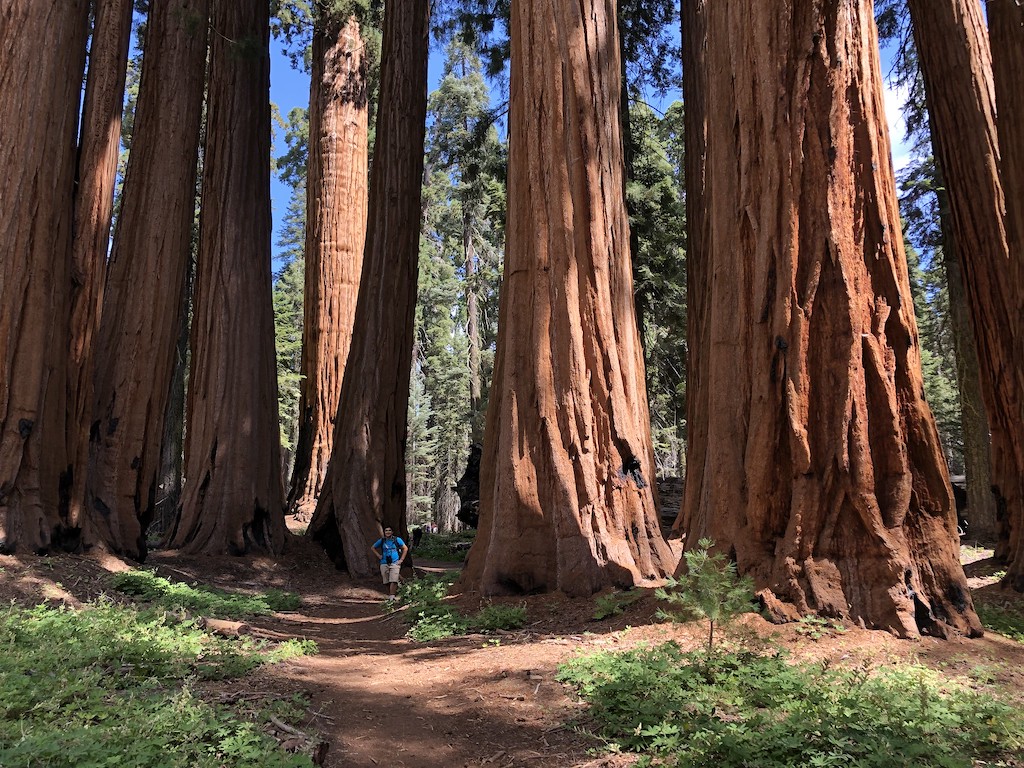
Underbrush
These redwood forests are rich in wildlife. So beyond the redwoods, there is a lot of other interesting vegetation to explore.
Underbush consists of the shrubs and small trees forming the undergrowth in a forest. One of the most common forms of underbush to see in a redwood forest are ferns.
When visiting these forests, don’t forget to take a little bit of time to lower your gaze to the beautiful underbrush you’ll come across.
Redwoods decimated
In 1850, old-growth redwood forest covered more than 2,000,000 acres along the California coast.
But the gold rush ushered in an era of miners and lumbermen who turned to harvesting redwoods for the booming construction occurring in San Francisco and other areas.
Redwood has a rich red color, is resistant to rot, and it’s an easy wood to work with so naturally it was one of the most sought-after woods for the construction boom.
What made matters worse was that the industrial revolution was in full swing. Loggers gained access to more advanced technology that allowed them to cut down these trees with more efficiency and transporting these mammoth trees became easier with the locomotive.
Soon, the redwood forests were disappearing fast.
But by the 1910s, some citizens banded together to save these trees and the Save-the-Redwoods League was born. This group was largely responsible in helping to establish the redwood preserves of Jedediah Smith Redwoods State Park, Del Norte Coast Redwoods State Park, and Prairie Creek Redwoods State Park (all discussed below).
Many estimate that today only around 5% of original old-growth redwood forests survive today, which is pretty soul-crushing when you consider that these trees have been around for about 240 million years.
Also, studies have shown that coast redwoods capture more carbon dioxide (CO2) from our cars, trucks and power plants than any other tree, so losing these trees has had a direct impact on our planet.
Luckily, restoration efforts have been going on for some time so we’re likely to see a resurgence in new-growth redwoods. And while we’ll never be able to replace the 90%+ of old growth trees that we lost, there are still some areas that can give you a good idea of what these forests used to look like before they were decimated by loggers.
Related: 10 Best Beaches in California (You Didn’t Know About)
1. Redwood National Park
The Redwood National and State Parks (RNSP) are a complex of state and national parks located in the United States
- Redwood National Park (established 1968)
- California’s Del Norte Coast
- Jedediah Smith
- Prairie Creek Redwoods State Parks
The combined RNSP contain 139,000 acres and feature old-growth temperate rainforests. You’ll find some of the best redwoods to explore in popular places like the Lady Bird Johnson Grove.
Related: How to Get A US National Park Pass
2. Del Norte Coast Redwoods State Park
Del Norte Coast Redwoods State Park is home to 50% old growth coast redwoods and makes up an 8-mile-long stretch of coastline along the northern California coastline.
It’s home to the Damnation Creek Trail, a four miles roundtrip hike which takes you from heavily forested trails down to the coast. Unfortunately, the last bridge needed to access the coast has been closed for some time.
The Damnation Creek Trail faces the coast so its prone to being shrouded with fog which adds to the mystique of the forest. One interesting fact about this park is that unlike most other redwood parks, the trees here get bigger towards the top of the hill which is the opposite of what you’ll find at most other redwood parks.
Tip: If you’ve never visited this region of California, know that temperatures stay very cool especially when the fog rolls in so always be prepared with layers when you visit.
Half-mile-long Wilson Beach, also known as False Klamath Cove, is great for tidepooling at low tide. But this beach isn’t made or swimming due to the strong currents, waves, and cold temperatures. By the way, if you’re looking for some of the best beaches in California, look no further!
3. Jedediah Smith Redwoods State Park
Jedediah Smith Redwoods State Park contains seven percent of all the old-growth redwoods left in the world and it’s arguably the best places to view these ancient trees in their natural condition.
It’s also home to the largest redwood by volume which is only exceeded in size by seven giant sequoias and not by very much.
That’s one insanely huge (and thick) redwood tree!
The park is named after Jedediah Strong Smith, who is known for being the first white man to explore the interior of northern California back in the 1820s.
The Smith River runs through the park which is where visitors can fish, snorkel, or even kayak the longest major free-flowing river in California.
Howland Hill Road is 10 miles, one way from Crescent City, and it’s one of the premier scenic drives through redwoods offered anywhere in the world. But the drive is not paved so depending on recent weather conditions, it could be a bit bumpy.
The drive offers an intimate encounter with old-growth redwoods in addition to many pull-outs and trailheads along the way, including two very popular trails: Boy Scout Tree Trail and Stout Grove.
Stout Grove is often considered to be the holy grail of redwood encounters and is downright magical when visited in the late afternoon as the sun casts golden streaks through the tall canopy of trees.
Related: 56 Most Beautiful Places in the USA
4. Prairie Creek Redwoods State Park
Prairie Creek Redwoods State Park is home to three scenic drives, 75 miles of hiking trails, and a 19-mile bike loop. While this park has quite the network of trails, it’s also remarkably pristine allowing you to get a sense of what this region of California was like pre-logging.
The park is also home to Elk Prairie, a beautiful meadow surrounded by redwoods where you can often find a herd of Roosevelt elk. Gold Bluff’s Beach is another spot where you might find these elk.
Fern Canyon is the most popular part of the park and was once used as a backdrop for the movie Jurassic Park. It can be explored via the The Friendship Ridge Trail.
5. Big Basin Redwoods State Park
Update: Fires have devastated much of this area.
Established in 1902, and located in theSanta Cruz Mountains, Big Basin Redwoods is California’s oldest state park.
The park is home to the largest continuous stand of ancient coast redwoods south of San Francisco. Vegetation found in the park consists of old-growth and recovering second-growth redwood forest, along with a mix of conifer, oaks, chaparral, and riparian habitats.
There are a few popular trails to try out at this state park.
The Redwood Loop Trail is a .6 miles hike where you can check out some of the park’s largest trees, including the Father of the Forest which has a circumference of 66 feet 9 inches and height 250 feet and the Mother of the Forest which has a circumference of 70 feet and a current height of 293 feet. There’s also the Chimney Tree which has a completely hollowed out trunk.
If you have more time you can check out the 4-mile loop on the Sequoia and Skyline to the Sea trails, which take you to the beautiful Sempervirens Falls and a site with a pioneer family cabin.
Tip: Use WalletFlo for all your credit card needs. It’s free and will help you optimize your rewards and savings!
6. Muir Woods National Monument
If you’re ever visiting the San Francisco area, Muir Woods National Monument is a must-visit.
Muir Woods National Monument contains 6 miles of trails. There is a 1/2 hour loop, a 1 hour loop, and a 1 1/2 hour loop as well as longer hikes on trails that extend into surrounding Mount Tamalpais State Park.
The trails in Muir Woods are asphalted or boardwalked. So if you’re not a true outdoors person then the Muir Woods can be a perfect introduction into nature.
The upper trails in the park are “dirt, narrow, steep, and rutted with tree roots.” They require more effort to make it through so if you’re traveling with strollers you probably don’t want to go that route.
This place can get very packed on weekends and parking can become very difficult to find. Luckily, you can arrange your transportation before you arrive. By the way, if you are looking to visit multiple national park sites then you might be interested in an annual national park pass that could save you a lot of money.
7. Humboldt Redwoods State Park
Humboldt Redwoods State Park, spans 53,000 acres, an area almost twice the size of San Francisco. Its claim to fame is that about one third of the park (roughly 17,000 acres), is old-growth redwood forest—the largest expanse of ancient redwoods in the world.
The park is home to the 32-mile-long Avenue of the Giants. This is one of the best scenic routes to check out these redwoods.
Good stops along the way include Founder’s Grove, home to a fallen 362-foot Dyerville Giant, and the California Federation of Women’s Clubs Hearthstone, designed by famed architect Julia Morgan.
The visitor center is also worth checking out with educational exhibits and activities, a theatre, a bookstore, and the famous Kellogg Travel Log—the world’s first RV carved out of a fallen log.
8. Henry Cowell Redwoods State Park
Henry Cowell Redwoods State Park is located in the Santa Cruz Mountains and its claim to fame is its 40-acre grove of old-growth redwood trees. These old-growth trees can best be explored The Redwood Grove Loop Trail, which is a short (0.8 mile) trail through an alluvial-flat grove.
The Garden of Eden is another very popular site at this park. It’s a swimming hole in the San Lorenzo River within Henry Cowell Redwoods State Park.
It requires about 1.5 miles of hiking, roundtrip, with an elevation change of 200 feet, but during a hot day in the summer, it can be an ultra-relaxing destination.
There’s also a northern extension of Henry Cowell State Park, called the Fall Creek Unit. It contains over 20 miles of hiking trails, mostly along creeks. During the rainy season (November through March), these creeks make mini waterfalls which can be a delight to see.
9. Montgomery Woods State Natural Reserve
Montgomery Woods State Natural Reserve started off as nine-acre donation by Robert Orr in 1945 but has been expanded to 2,743 acres largely from help by the Save the Redwoods League.
The park is home to a 367.5-foot redwood that was once thought to be the tallest tree in the world (until taller trees were found in Humboldt Redwoods State Park and Redwoods National Park).
Montgomery Woods is also home to several other trees more than 350 feet tall, which is rare for redwoods found this far south. Rich soil deposited by floodwaters from the small stream that flows through the grove is the reason for these extra tall trees.
Tip: Plan your visits for the spring or early summer when the hills and vegetation are lush. towards the end of the summer and fall, conditions can become very dry and the scenery isn’t quite as stunning.
A popular attraction is the two-mile-long Montgomery Trail which takes you through Kellieowen Grove and through lush forests along Montgomery Creek.
10. Hendy Woods State Park
A little less than three hours from San Francisco, Hendy Woods State Park covers two groves of redwoods.
The park has an interesting past with a guy known as Pitro Zalenko aka Hendy Hermit, a Russian immigrant who lived near the park for 18 years during the 1960s and ’70s. He lived in huts he created consisting of redwood plank lean-tos, including one that was located on a hollowed-out tree stump.
This redwood park is little warmer and less foggy than most other coastal redwood parks and so it’s a popular swimming spot in the summer and some also enjoy canoeing and kayaking, too.
The park has over five miles of trails, including Big Hendy Grove’s (wheelchair-accessible) Discovery Trail, where you can see park’s finest old-growth coast redwoods.
If you have several hours try Big Hendy’s 1.6-mile Upper Loop Trail, which includes the Discovery Trail and more old-growth trees. You can also try the Hermit Hut Trail, where you can see the downed redwood that sheltered Hendy Hermit for a couple of decades and another one of his dwellings.
11. Julia Pfeiffer Burns State Park
Julia Pfeiffer Burns State Park is one of the crown jewels of the California State Park system. It’s located right on the California Coast and it’s where you go for the Big Sur experience.
But this park also has some to offer when it comes to redwoods. In the south section of the park you can find the 5-mile-long Ewoldsen Trail, which is a fantastic day hike. Although it’s a little challenging and steep at times, it offers great views of lush redwoods along with spectacular ocean and mountain views.
Redwoods you can drive through
If you’re interested in redwoods that you can drive through then check out these tree trees:
1. Chandelier Tree—Leggett, Mendocino County
2. Shrine Drive-Thru Tree—Myer’s Flat, Humboldt County
3. Klamath Tree (or Tour-Thru Tree)—Klamath, Del Norte County
Final word
There are many places to check out redwoods in California. I would do my best go check out some of the most pristine areas like Stout Grove so that I could see redwood forests as they existed in pre-logging days but any of these destinations will offer some unforgettable encounters with these giants.
Daniel Gillaspia is the Founder of UponArriving.com and the credit card app, WalletFlo. He is a former attorney turned travel expert covering destinations along with TSA, airline, and hotel policies. Since 2014, his content has been featured in publications such as National Geographic, Smithsonian Magazine, and CNBC. Read my bio.


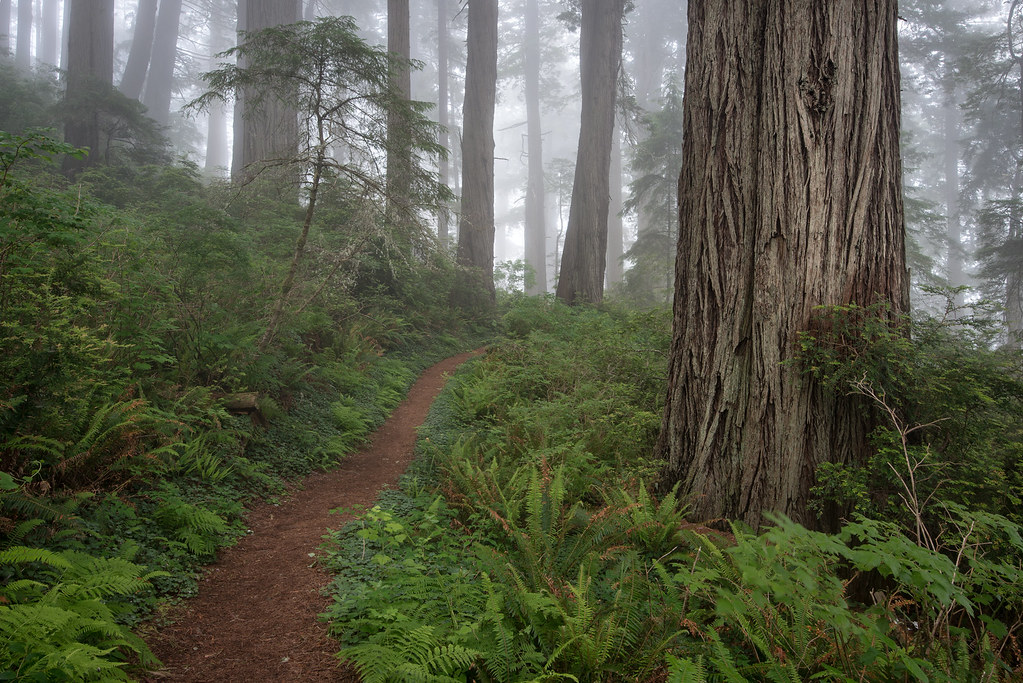
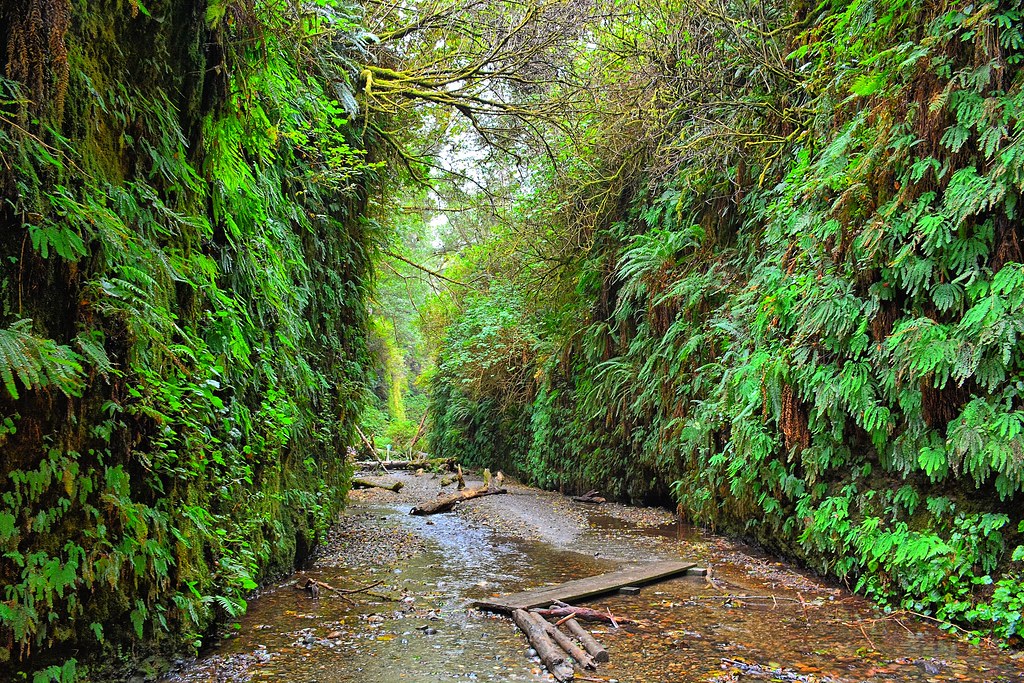

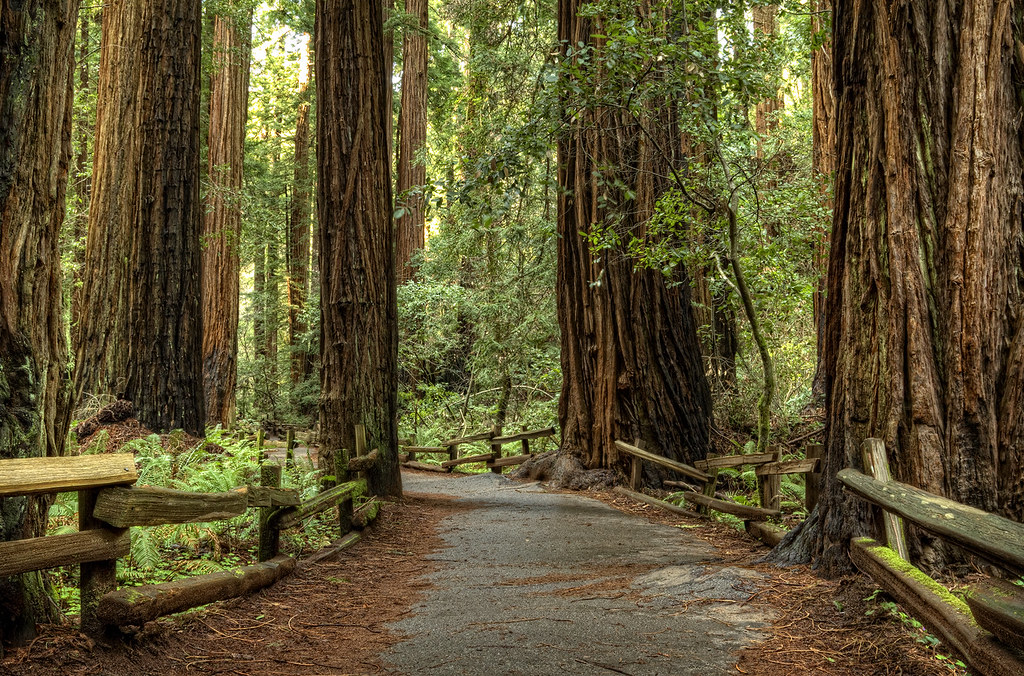
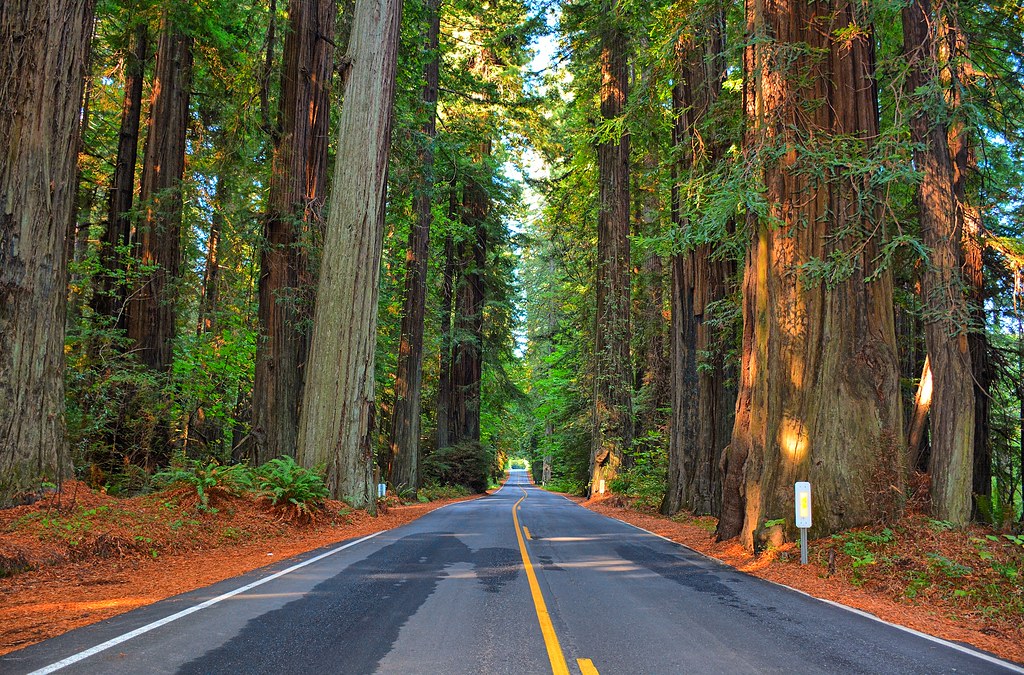

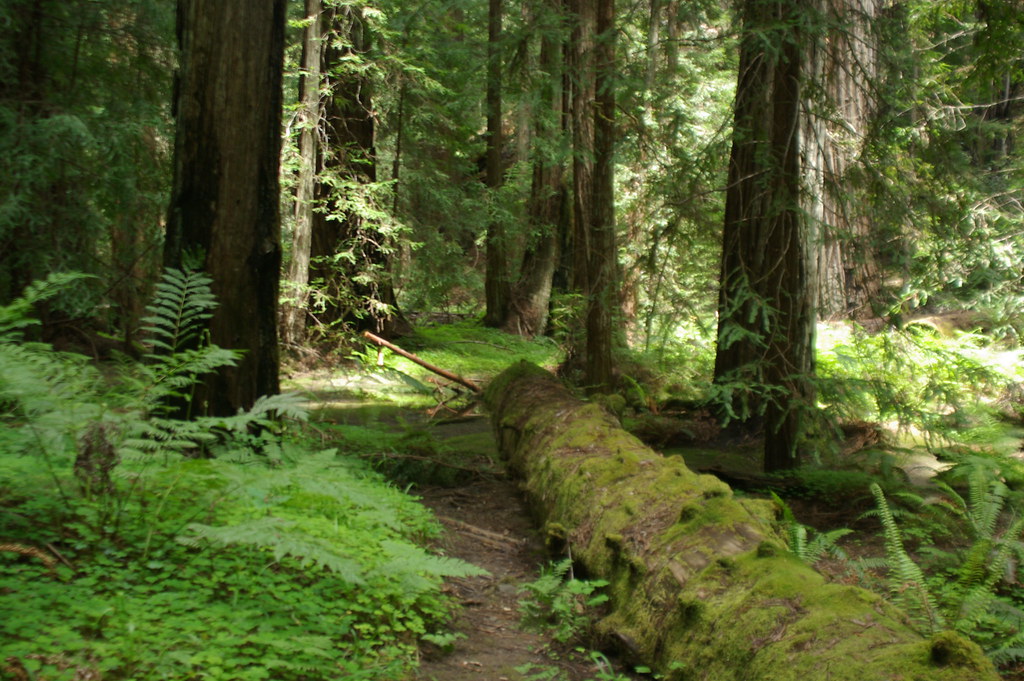
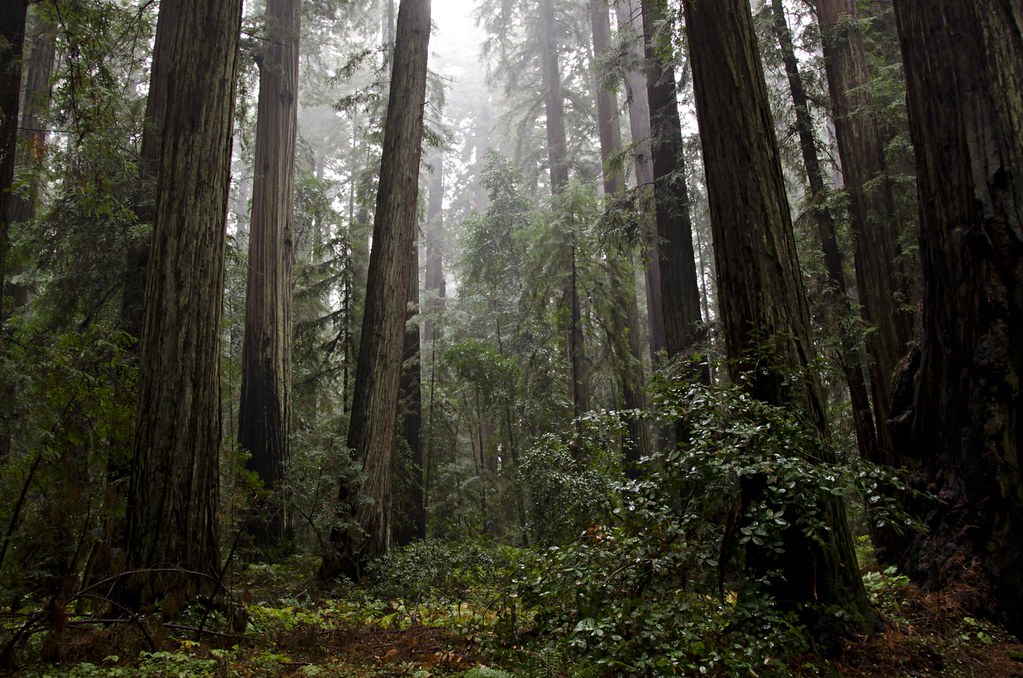
Thank you for showing 2 of my photos in your great article.
Big Basin burned massively in 2020, including most of the oldest growth and visiting areas.
Sad to hear but thanks for the updated info!